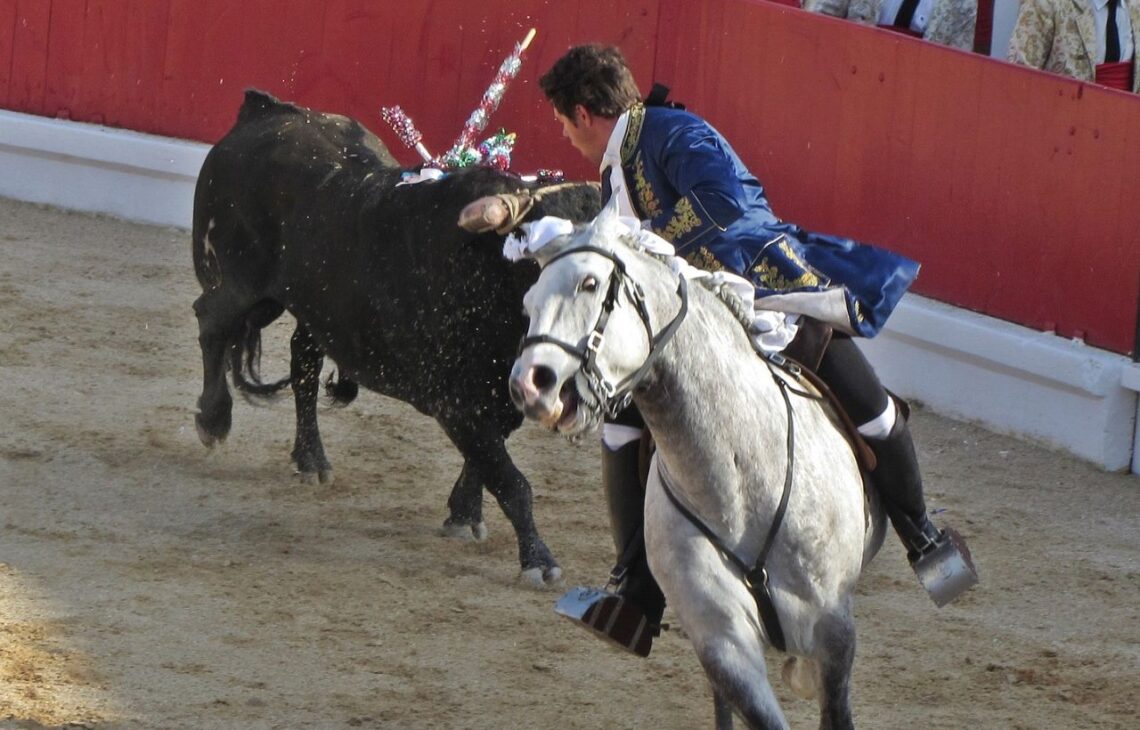
The role of the picador in Madrid bullfighting and why they use horses
Madrid bullfighting is a time-honored tradition that has been an integral part of Spanish culture for centuries. One of the key components of this spectacle is the use of horses and the picador, who plays an essential role in the fight. In this article, we will delve into the role of the picador in Madrid bullfighting and explore why horses are used in this controversial practice.
The Role of the Picador
The picador is a horse-mounted bullfighter who wields a long lance or pike called a vara. His primary role is to weaken the bull by piercing its muscles and tissues, making it easier for the matador to ultimately kill the bull. The picador also serves to control the bull’s movements and test its strength and stamina.
The picador enters the ring after the bull has been released and has had a chance to run around and get a sense of its surroundings. The picador and his horse are the first line of defense against the bull’s initial charge. The picador will then use the vara to stab the bull in the neck and shoulders, aiming for the muscle and tissue surrounding the bull’s spinal cord.
The picador’s actions serve two primary purposes. First, they test the bull’s strength and determine how aggressive it is. Second, they weaken the bull by injuring it, making it easier for the matador to ultimately kill it. However, this practice is controversial, and animal rights activists argue that it is inhumane and cruel.
Why Horses are Used
The use of horses in Madrid bullfighting is a long-standing tradition that dates back to the 16th century. The horses are specially trained for this role and are selected for their strength and temperament. They wear padded armor to protect them from the bull’s horns and are trained to remain calm and steady during the fight.
The use of horses serves several purposes in bullfighting. First, they provide a physical barrier between the bull and the matador, protecting the matador from being gored by the bull. Second, they allow the picador to ride up close to the bull and deliver the vara more accurately. Finally, they serve as a show of strength and skill, highlighting the rider’s ability to control the horse and navigate the dangerous environment of the bullring.
The use of horses in bullfighting has long been a point of controversy. Animal rights activists argue that it is cruel to use horses in this way, subjecting them to unnecessary risk and stress. However, supporters of the tradition argue that the horses are well-cared for and that their use is an essential part of the bullfighting spectacle.
The Training of the Picador and the Horse
Becoming a picador is a long and challenging process that requires years of training and experience. The first step is to become an apprentice to an experienced picador, learning the skills and techniques necessary to handle the horse and the vara. Apprentices must also have a thorough understanding of bull behavior and be able to predict the bull’s movements and reactions.
Horses used in bullfighting are also specially trained for this role. They must be strong and agile, able to move quickly and change direction at a moment’s notice. They must also be calm and steady under pressure, able to remain focused in the face of a charging bull. Horses are selected for their temperament and trained from a young age, gradually building up their skills and experience over time.
The process of training horses for bullfighting has come under scrutiny from animal rights groups, who argue that it is cruel and abusive. Supporters of the tradition argue that the horses are well-cared for and that their training is necessary to ensure their safety and that of the rider.
The Controversy Surrounding Bullfighting
Bullfighting has long been a controversial practice, with critics arguing that it is a cruel and inhumane spectacle that inflicts unnecessary pain and suffering on animals. Animal rights groups have been calling for an end to bullfighting for years, and several countries have banned the practice, including Catalonia in Spain.
Despite the controversy, bullfighting remains a popular tradition in Spain, and many people continue to support and enjoy the spectacle. Supporters of the tradition argue that bullfighting is an important part of Spanish culture and that it should be preserved for future generations to enjoy.
In conclusion, the role of the picador and the use of horses in Madrid bullfighting are a longstanding tradition that has been an integral part of Spanish culture for centuries. While the use of horses and the picador has come under scrutiny from animal rights activists, supporters of the tradition argue that it is an essential part of the bullfighting spectacle. Regardless of one’s opinion on the matter, it is important to understand the history and cultural significance of this controversial practice when visiting Madrid.